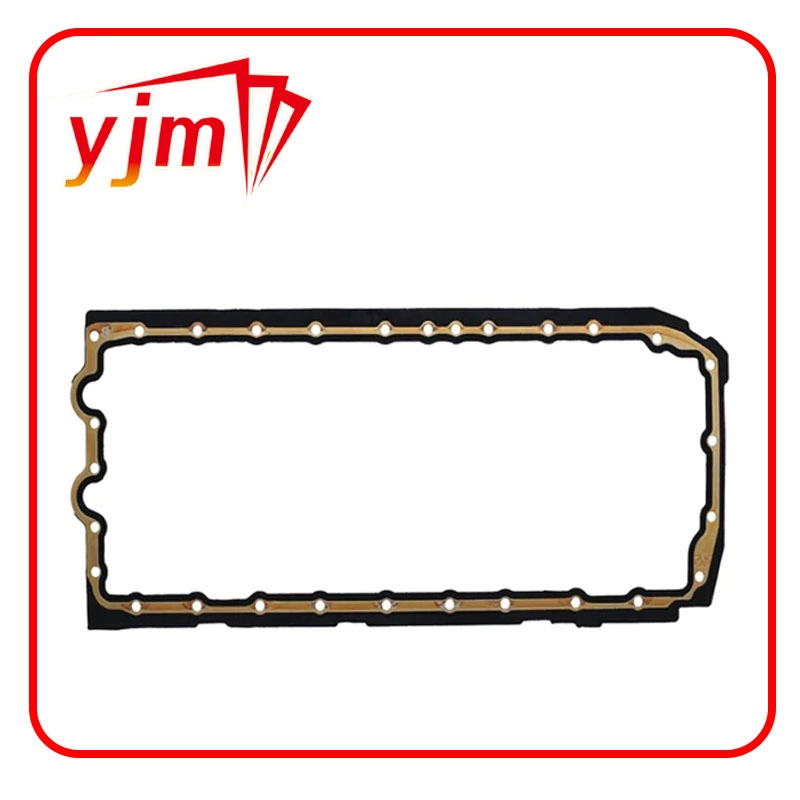crankshaft rear main seal
Understanding the Crankshaft Rear Main Seal Importance and Function
The crankshaft rear main seal, commonly referred to simply as the rear main seal, plays a crucial role in the functionality and longevity of an internal combustion engine. Positioned at the rear of the crankshaft, this seal is essential for maintaining the integrity of the engine's oil system while preventing oil leaks. With the continuous stresses and operational demands placed upon it, understanding the rear main seal is vital for both automotive enthusiasts and everyday drivers.
Function of the Rear Main Seal
The primary function of the rear main seal is to keep engine oil contained within the engine’s crankcase. The crankshaft spins at high speeds during engine operation, and without a proper seal, oil could easily leak out, leading to a decrease in lubrication and potential engine damage. The rear main seal helps to maintain oil pressure and prevents contaminants from entering the crankcase. This is especially important for ensuring that the oil can effectively lubricate the engine components, reducing friction, heat, and ultimately wear.
Construction and Materials
Typically, the rear main seal is composed of durable materials such as rubber or silicone, often reinforced with metal for added strength. The design usually features a rounded lip that fits snugly against the crankshaft, providing a robust barrier to oil. Over time, however, seals can degrade due to factors such as temperature fluctuations, oil degradation, and engine vibrations, which can lead to leaks and other mechanical issues.
Signs of a Failing Rear Main Seal
crankshaft rear main seal

As with any component in an engine, the rear main seal can fail, leading to several noticeable symptoms. One of the most common signs of a failing seal is the presence of engine oil leaks, typically found in the area beneath the rear of the engine. A drop in oil pressure may also indicate a problem, as can the smell of burning oil if the leaking fluid comes in contact with hot engine components. Additionally, any noticeable increased oil consumption may warrant a closer inspection of the rear main seal.
The Consequences of Ignoring Issues
Ignoring a failing rear main seal can lead to serious consequences. Oil leaks can result in reduced lubrication, which over time can cause extensive damage to engine parts. In severe cases, a significant loss of oil can lead to total engine failure, resulting in costly repairs or even a complete engine replacement. Therefore, it is essential for drivers to address any signs of a malfunctioning seal promptly.
Replacement and Maintenance
When it comes to replacing a rear main seal, it can be a labor-intensive task, often requiring removal of the transmission or other components. Therefore, it’s crucial to engage in regular maintenance to monitor overall engine health, including routine oil checks and servicing. If a rear main seal replacement is needed, it’s advisable to consult with a professional mechanic who can ensure proper installation and alignment.
In conclusion, the crankshaft rear main seal is a small but vital component that contributes significantly to the effective operation of an engine. Understanding its function, monitoring for signs of wear, and addressing issues promptly can lead to a healthier, more reliable engine for any vehicle owner. Regular maintenance and timely repairs will not only extend the life of the engine but also enhance overall driving performance.
-
Understanding the Front Main Engine Seal: Purpose, Maintenance, and Installation
News Jul.29,2025
-
Understanding O-Rings and Seal Rings: Types, Applications, and Custom Solutions
News Jul.29,2025
-
Understanding Crankshaft Oil Seals: Rear Seals, Pulley Seals, and Their Role in Engine Integrity
News Jul.29,2025
-
The Importance of Front and Rear Crankshaft Seals in Engine Performance and Oil Management
News Jul.29,2025
-
Crank Oil Seals: Functions, Types, and Cost Considerations in Engine Maintenance
News Jul.29,2025
-
A Comprehensive Guide to O-Rings and Seals: Types, Materials, and Global Applications
News Jul.29,2025
-
Mastering Diesel and Performance Engine Maintenance: A Guide to Critical Oil Gaskets
News Jul.28,2025
Products categories















